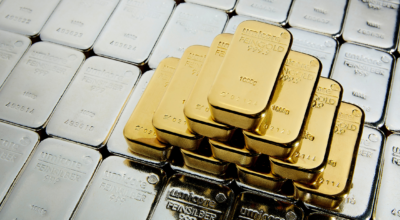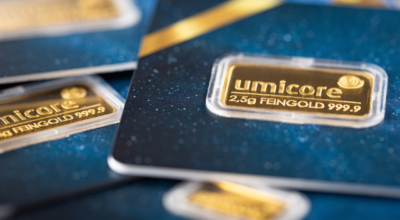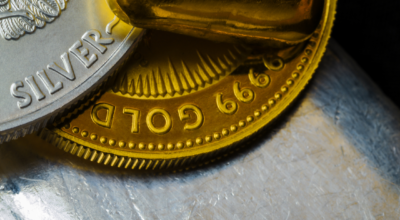De-dollarization Supports Gold and Silver Hit 1-year High
- Business Insider: De-dollarization means gold is underrated and has a long way to run
- Morningstar: Silver hit a 1-year high. Here’s why it can keep climbing.
De-dollarization means gold is underrated and has a long way to run
By Filip De Mott, 11.5.2023
Gold is underrated and could be pushed up by de-dollarization, said Bridgewater’s Co-CIO Karen Karniol-Tambour:
This geopolitical turmoil is not going away. This is a slow-moving secular support for gold. Inflation will also keep interest in gold elevated as well.
Gold could be at the start of a lasting growth period as global de-dollarization trends continue. This comes as some countries look to reduce their reliance on the US dollar, which is dominant in international trade and traditionally is seen as a pillar reserve asset for central banks.
But Western sanctions on Russia that froze its foreign currency reserves highlighted the risks in using dollars. And since Russia’s invasion of Ukraine, more countries have turned to China’s yuan or other non-dollar currencies for trade deals.
Meanwhile, with inflation still relatively elevated throughout global markets, gold is primed to continue attracting investors as a hedge against purchasing power erosion. Consumer inflation in the US has slowed down sharply from last June’s high of 9%. But the most recent CPI data for April put inflation at 4.9%, which is still well above the Federal Reserve’s target of 2%.
Silver hit a 1-year high. Here’s why it can keep climbing.
By Myra P. Saefong, 3.5.2023
Gold isn’t the only precious metal benefiting from economic uncertainty and the crisis in the banking sector. Silver prices last month climbed to their highest in a year, with room to move higher as the global market for the metal this year looks to post its second largest supply deficit in 20 years.
Demand for physical silver, and gold for that matter, is showing overall investor concern over the state of the economy, geopolitical turmoil, and potentially persistent inflation,
said Stephen Gardner, director at ETF Managers Group. He said that the risks are creating a growing willingness to park money in safe-haven assets. That almost happened with Silicon Valley Bank and Signature Bank; the powers that be came to the depositors’ rescue but no one can be certain this will hold true going forward.
The ICE U.S. Dollar index, a gauge of the dollar’s strength against a basket of major currencies, trades around 2% lower year to date, providing some support for dollar-denominated prices of gold. Investors continue to flee volatile supply assets like the dollar, and seek fixed supply assets like silver, said Will McDonough, co-founder and chief executive officer of EMG Advisors.
The current ratio of gold to silver is around 79 to one, meaning it would take roughly 79 ounces of silver to buy once ounce of gold. That’s relatively high by historical standards, but the ratio has fluctuated quite a bit in the last couple of years.
Keith Weiner, chief executive officer and founder of Monetary Metals, says:
”Now is the time of heightened risk. People buy gold and silver to avoid credit risk”.
When asked to discuss the price ratio, Weiner said that in the short term, the market is ”reasonably well balanced,” and that over the long term, silver is likely to outperform gold. Record silver demand last year contributed to a global supply deficit of 237.7 million ounces in 2022, the second annual deficit in a row, and “possible the most significant deficit on record,” according to the Silver Institute’s 2023 World Silver Survey released in April.
Total global silver demand grew by 18% to 1.242 billion ounces last year, with demand from the industrial segment posting a record of 556.5 million ounces, according to the survey. Global silver supplies, meanwhile, were little changed as mine production in Peru took a hit due in part to social unrest, while production in Mexico, Argentina and Russia climbed. Total supplies were at 1.0047 billion ounces last year from 1.0045 billion in 2021, the survey showed.
If you’re considering gold and silver to buy, Jalonom offers a variety of gold and silver products, providing a convenient and secure method to acquire these valuable assets.
If you’re considering gold and silver to buy, Jalonom offers a variety of gold and silver products, providing a convenient and secure method to acquire these valuable assets.






